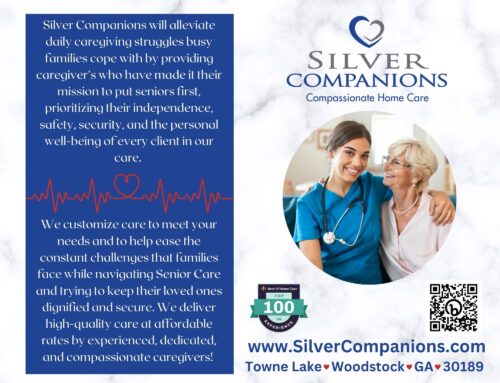
New guidelines focus on your personal risk, LDL target levels and new drugs for those likely to get cardiovascular disease.
New cholesterol recommendations from the American Heart Association, backed by the American College of Cardiology, support the treatment of older patients with high cholesterol who have previously been left untreated.
“High cholesterol treatment is not one size fits all, and this guideline strongly establishes the importance of personalized care,” says Dr. Michael Valentine, president of the American College of Cardiology.
“Over the past five years, we’ve learned even more about new treatment options and which patients may benefit from them,” he said. “By providing a treatment roadmap for clinicians, we are giving them the tools to help their patients understand and manage their risk and live longer, healthier lives.”
What is Cholesterol?
Cholesterol is a waxy, fat-like substance found in every cell of your body. It is used to make vitamin D, hormones and compounds that assist with digestion. Every cell membrane needs cholesterol, which supports intracellular transport, nerve conduction and cell signaling.
You can get cholesterol from animal-based foods such as meat, eggs, and dairy items like milk and cheese, but you don’t need these foods to get cholesterol. Although your body can make all the cholesterol it needs, many of us consume too much cholesterol and struggle to keep our cholesterol at safe levels.
To reach every cell in your body, cholesterol travels through the bloodstream while attached to two types of lipoprotein: low-density lipoprotein (LDL) and high-density lipoprotein (HDL). In general, LDL is known as the “bad” cholesterol, while HDL is considered “good.” LDL cholesterol can stick to the walls of your arteries, increasing the chance you’ll get heart disease because the heart muscle must work harder to pump blood through narrower channels. Cholesterol can be lowered through diet, exercise and/or medication.
Previous Guidelines Inadequate
The new guidelines replace those from five years ago. Those previous recommendations were troubling on numerous accounts, according to Dr. Steven Nissen, chairman of cardiovascular medicine at the Cleveland Clinic. The 2013 advice omitted components such as family history, overemphasized risks associated with statin drug therapy at lower thresholds, and rejected target levels for LDL cholesterol, which provided finite goals for patients.
People with LDL levels of 100 or below “tend to have lower rates of heart disease and stroke, supporting a ‘lower is better’ philosophy,” according to a statement issued by the medical organizations regarding the new guidelines. A level of LDL above 160 is considered “very high.” The new guidelines suggest that high-risk patients aim to lower this number below 70. Patients who have previously had a heart attack or stroke may need to add another drug if statins don’t do the trick. The medication Ezetimibe, also available as a generic, can be used. Patients at extremely high risk can add a PCSK9 inhibitor.
This new attitude encourages medical professionals and patients to discuss a broad array of risk factors, including family history and ethnicity, and the presence of other conditions such as metabolic syndrome, premature menopause and chronic kidney disease.
Cholesterol at Every Age
Previously, high cholesterol in older patients was often left untreated. However, the new recommendations recognize the importance of healthy cholesterol levels at every age.
“They now acknowledge that it might be appropriate to treat older people,” says Nissen. “Today’s 75-year-old can live a long time.”
High-risk children can be treated as young as age two. Most youngsters should have their first cholesterol test between the ages of nine and 11, followed by another test between the ages of 17 and 21. The accumulation of cholesterol, even at these early ages, can have a big impact on the likelihood of heart disease later in life.
Coronary Calcium Artery Score Controversial
However, Nissen does have a criticism of the new guidelines in one regard: the suggestion to use a coronary calcium artery score to help determine the need to lower cholesterol in patients for whom the need is unclear.
The score highlights plaque buildup in arteries via a CT scan, which at the Cleveland Clinic where Nissen works, can run between $500 and $1,000 for one that includes angiography.
“You’re radiating somebody to decide whether to use a drug that costs as little as $3 a month, and you’re spending a lot of money to do it,” Nissen says. “I just don’t think it’s prudent.”
Heart Disease Is a Killer
Heart disease is lethal. In fact, it’s the leading cause of death in the U.S., according to the U.S. Centers for Disease Control and Prevention. Heart attacks and strokes end the lives of more than 836,000 Americans every year, according to the American Heart Association and the American Stroke Association.
“Having high cholesterol at any age increases that risk significantly,” says Dr. Ivor Benjamin, president of the American Heart Association. “That’s why it’s so important that even at a young age, people follow a heart-healthy lifestyle and understand and maintain healthy cholesterol levels.”
Total cholesterol |
HDL cholesterol |
LDL cholesterol |
Triglycerides |
|
| Good | Less than 200 | 40 or higher | Less than 100 | Less than 149 |
| Borderline | 200–239 | N/A | 130–159 | 150–199 |
| High | 240 or higher | N/A | 160 or higher | 200 or higher |
| Low | N/A | less than 40 | N/A | N/A |
Sources:
www.cnn.com/2018/11/10/health/cholesterol-guidelines-aha-bn/index.html
www.sigmaaldrich.com/life-science/cell-biology/cell-biology-products.html?TablePage=9563178
www.medicalnewstoday.com/articles/321115.php
www.webmd.com/cholesterol-management/guide/understanding-numbers#1
www.healthline.com/health/high-cholesterol/levels-by-age#adults
Blog posting provided by Society of Certified Senior Advisors www.csa.us





